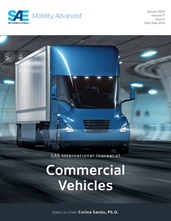Wet pavement conditions during rainfall present significant challenges to traffic
safety by reducing tire–road friction and increasing the risk of hydroplaning.
During high-intensity rain events, the roadway pavement tends to accumulate
water, forming a film that can have serious implications for vehicle control. As
the longitudinal speed of the vehicle increases, a water wedge forms in front of
the tire, leading to partial loss of contact with the road. At critical
hydroplaning speed, a complete water layer forms between the tire and the road.
Although less common, dynamic hydroplaning poses severe risks when
high-intensity rainfall coincides with high vehicle traveling speed, leading to
a complete loss of control over vehicle steering capabilities. This study
advances hydroplaning research by integrating real-world data from the Road
Weather Information System (RWIS) with an existing hydroplaning model. This
approach provides more accurate hydroplaning risk assessments, emphasizing the
importance of adapting predictive models to real-world conditions. Measurements
of water film thickness from two Maryland locations over a year showed values of
the water film heights up to 1.9 mm, with significant hydroplaning risk for
vehicles with worn tires traveling at highway speeds. Using models such as
Gengenbach and Gallaway, the study computes critical hydroplaning speeds,
highlighting the importance of tire tread depth, inflation pressure, and
pavement texture. Results indicate that the critical hydroplaning speed varies
significantly based on these factors, emphasizing the need for safe driving
practices during heavy rainfall. The findings underscore also the importance of
developing new hydroplaning models in the context of future autonomous vehicles
that needs robust algorithms for operating in wet conditions.
